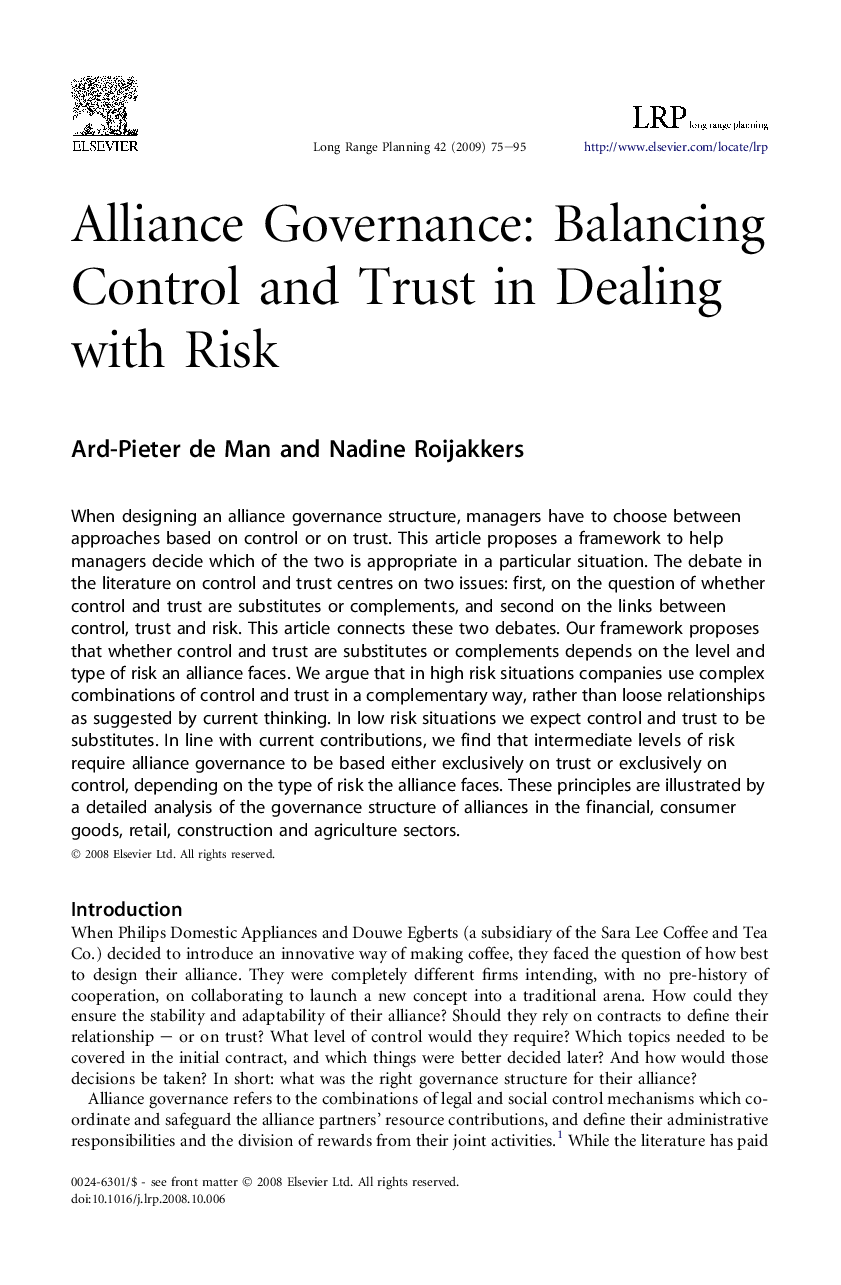| Article ID | Journal | Published Year | Pages | File Type |
|---|---|---|---|---|
| 1021521 | Long Range Planning | 2009 | 21 Pages |
When designing an alliance governance structure, managers have to choose between approaches based on control or on trust. This article proposes a framework to help managers decide which of the two is appropriate in a particular situation. The debate in the literature on control and trust centres on two issues: first, on the question of whether control and trust are substitutes or complements, and second on the links between control, trust and risk. This article connects these two debates. Our framework proposes that whether control and trust are substitutes or complements depends on the level and type of risk an alliance faces. We argue that in high risk situations companies use complex combinations of control and trust in a complementary way, rather than loose relationships as suggested by current thinking. In low risk situations we expect control and trust to be substitutes. In line with current contributions, we find that intermediate levels of risk require alliance governance to be based either exclusively on trust or exclusively on control, depending on the type of risk the alliance faces. These principles are illustrated by a detailed analysis of the governance structure of alliances in the financial, consumer goods, retail, construction and agriculture sectors.
